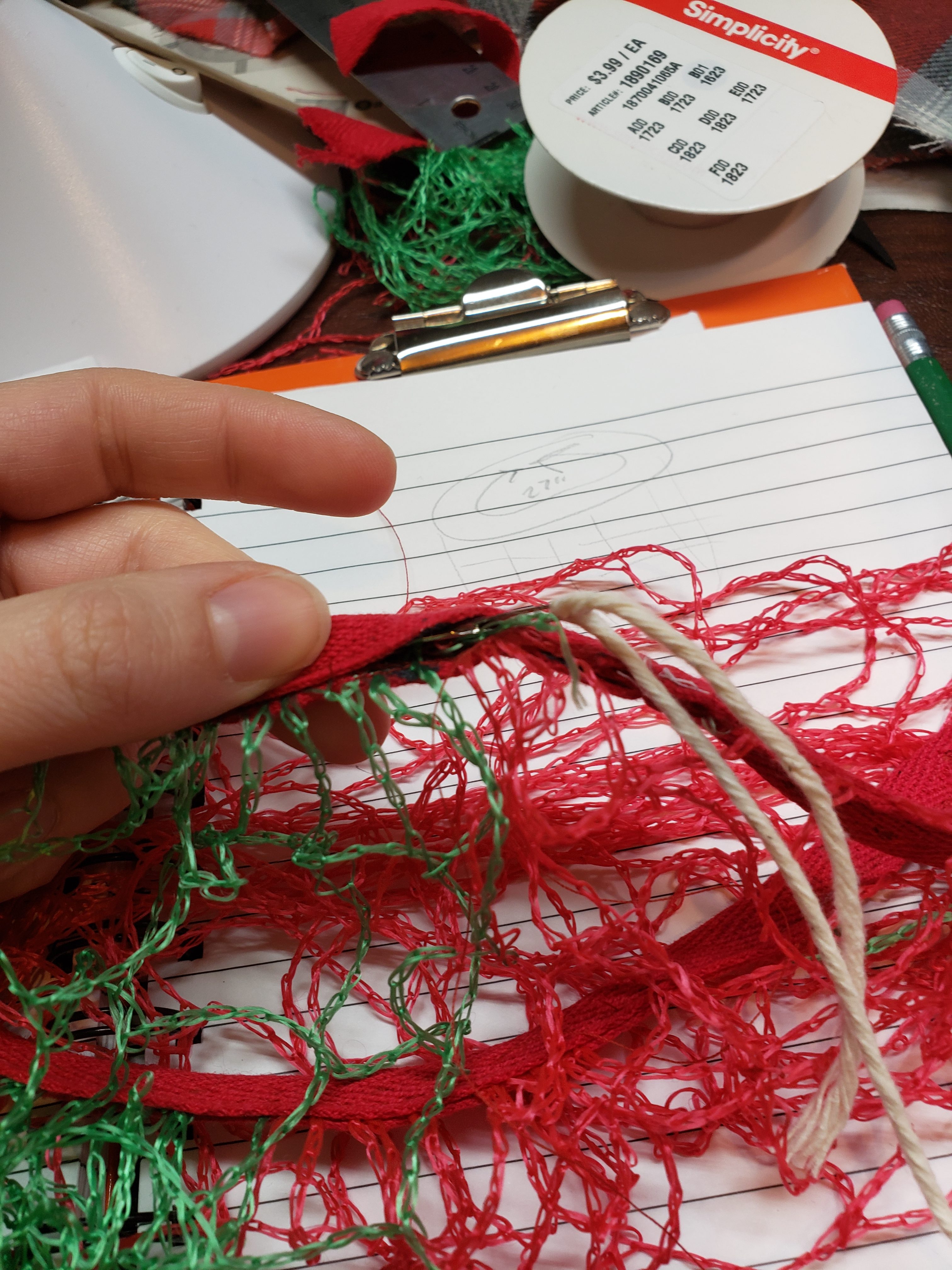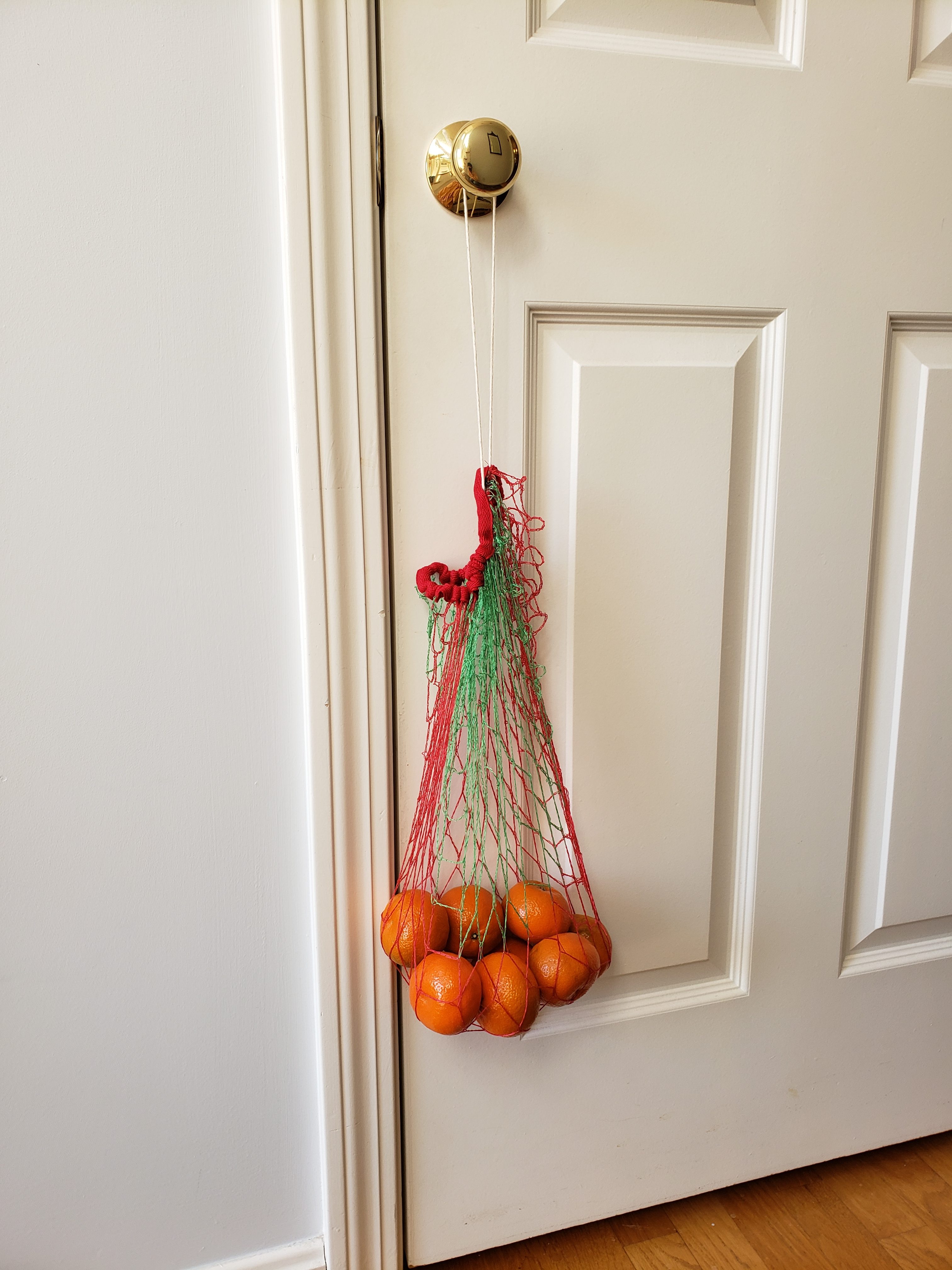“Neither fire nor wind, birth nor death can erase our good deeds” – Buddha (paraphrased by Jack Kornfield)
Okay guys, I have another vegetarian recipe for you this week! Just joking, don’t worry! Instead – the next best thing – an upcycling craft! You see, my grandma passed away last week. Yes, this is my grandma Kohm who kept all the German food and traditions alive and who I very recently mentioned a couple weeks ago in this post. I’m happy to say my grandma will always live on in all the traditions she passed down to us, that we all hold so dear. This includes her love of all living things and the Earth! My grandma was a regular green thumb (I did not inherit that from her sadly) and my grandparent’s postage stamp backyard was always a verdant jungle of fresh fruits and vegetables. And for as long as I can remember (I’m certain much longer) my grandma always composted her kitchen scraps for that fabulous garden of hers. I started composting because of her! She also was an avid seamstress and upcycled all she could – a skill/desire that I’m certain was passed down to me from both my grandmas. I hope they’d both approve of this craft.
This craft was born from the netting that I didn’t want around the Christmas tree, but was already around the tree by the time we got back from our walk to get it. I’ve been wanting to make lightweight produce bags for a while, but I decided not to buy any new material this year (did I mention that?!) The netting has been hanging around my basement, since, well, Christmas so I finally tried to make a produce bag out of it. It was slightly time consuming, but it seems to hold up well and it is definitely very lightweight! And as an added bonus I’m not accidentally killing any dolphins or porpoises or adding to trash island.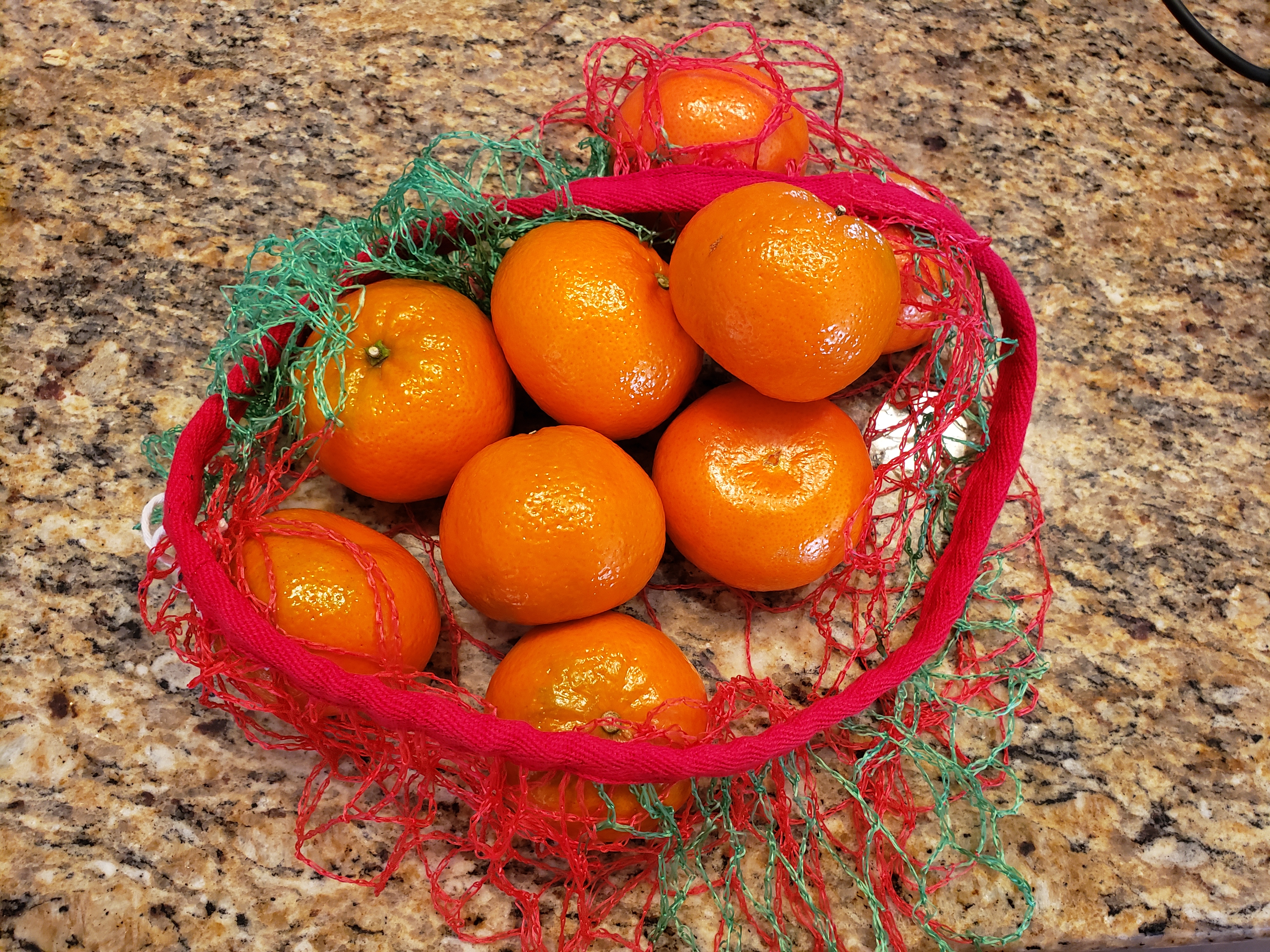
Upcycled Produce Bag
What you’ll need:
- 2/3 yard of lightweight netting
- 20″ of 1″ thick woven trim
- 1 yard of kitchen twine
- Cut a roughly 16″x16″ square from the lightweight netting.
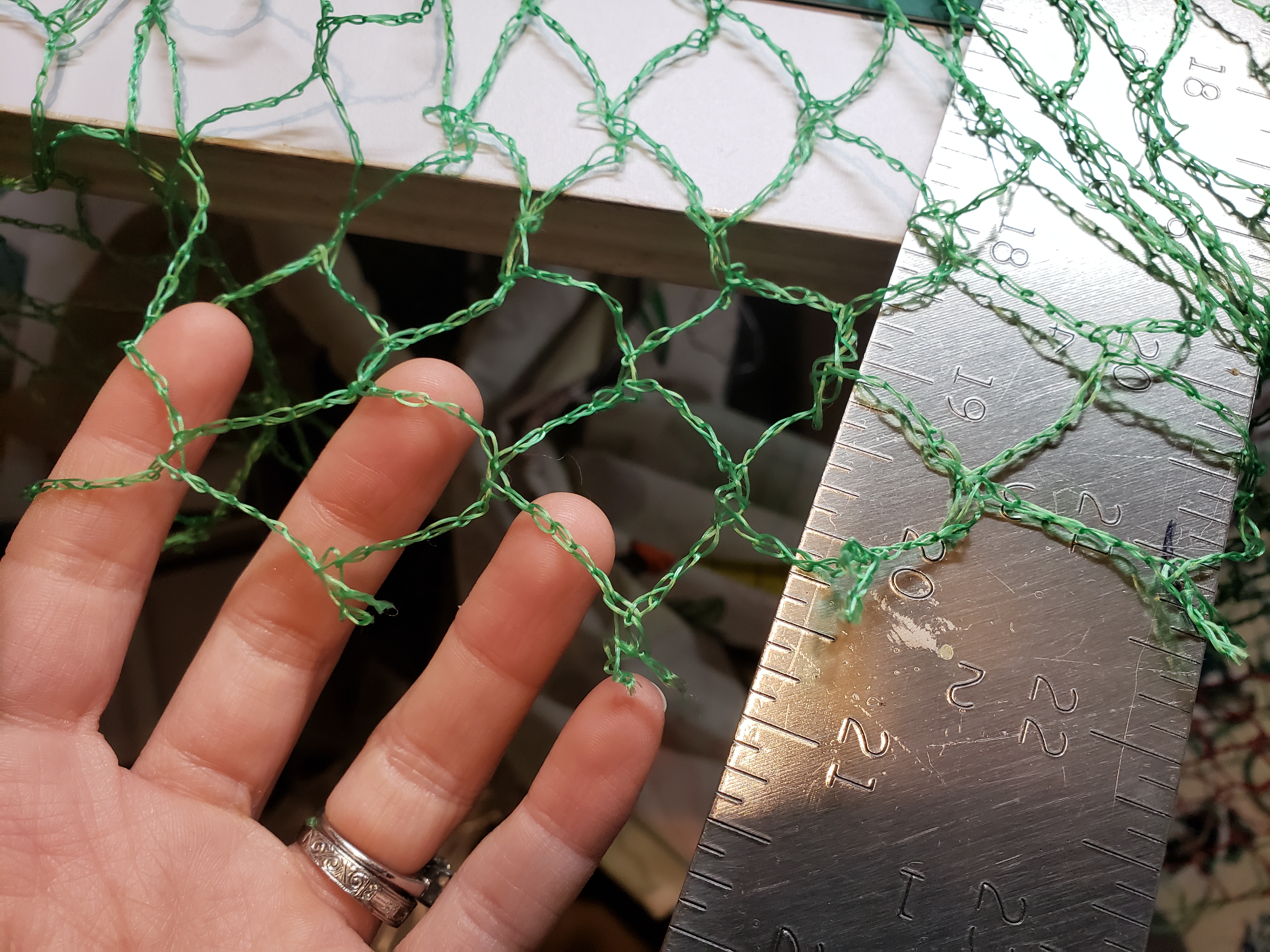
- Stitch ends of trim together.

- With needle and thread, hand stitch each loop of the netting to the “bad side” of the trim (where the unfinished edges face in), spacing the netting evenly over the whole trim.
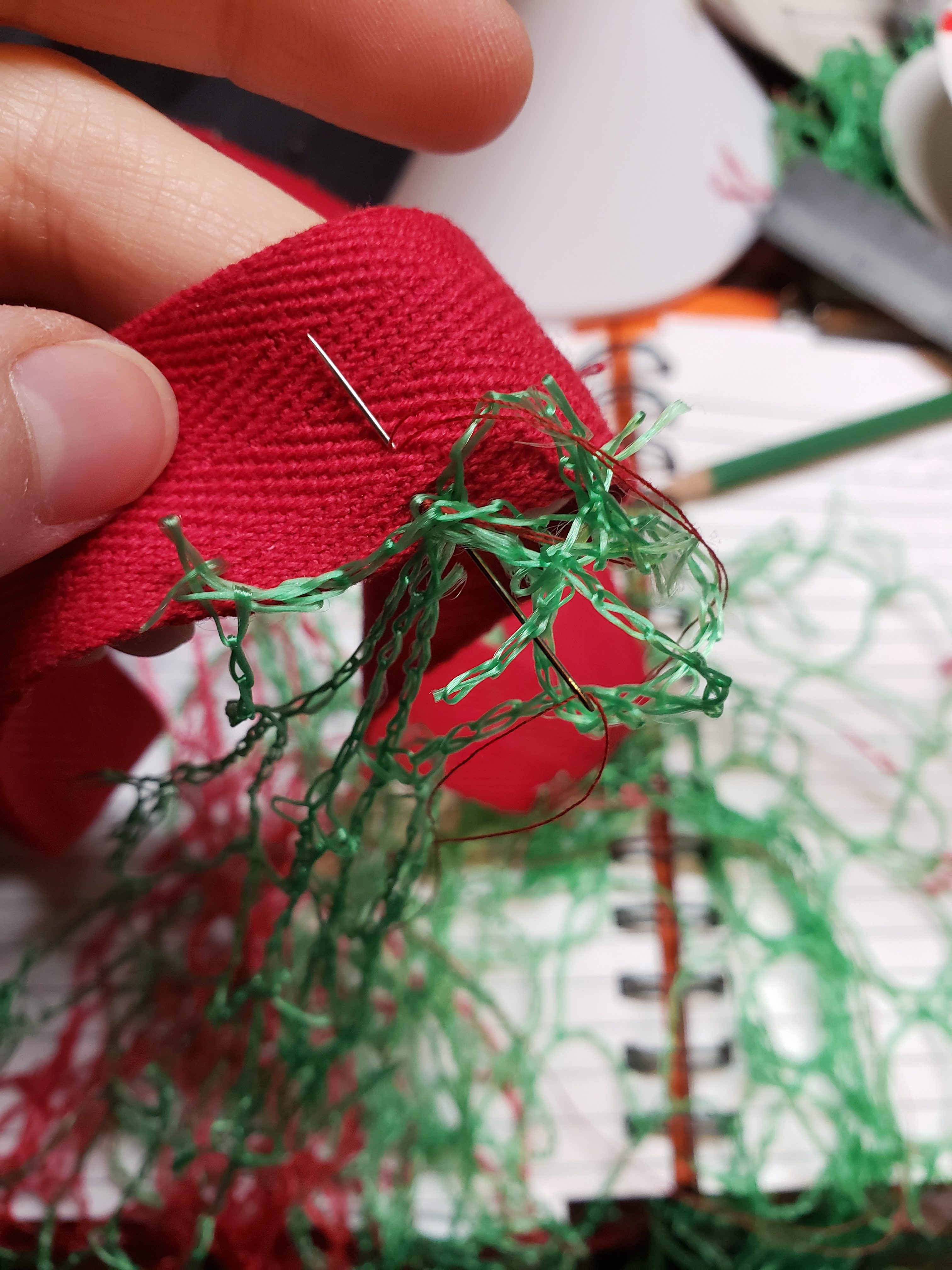
- Trim off any unruly threads.
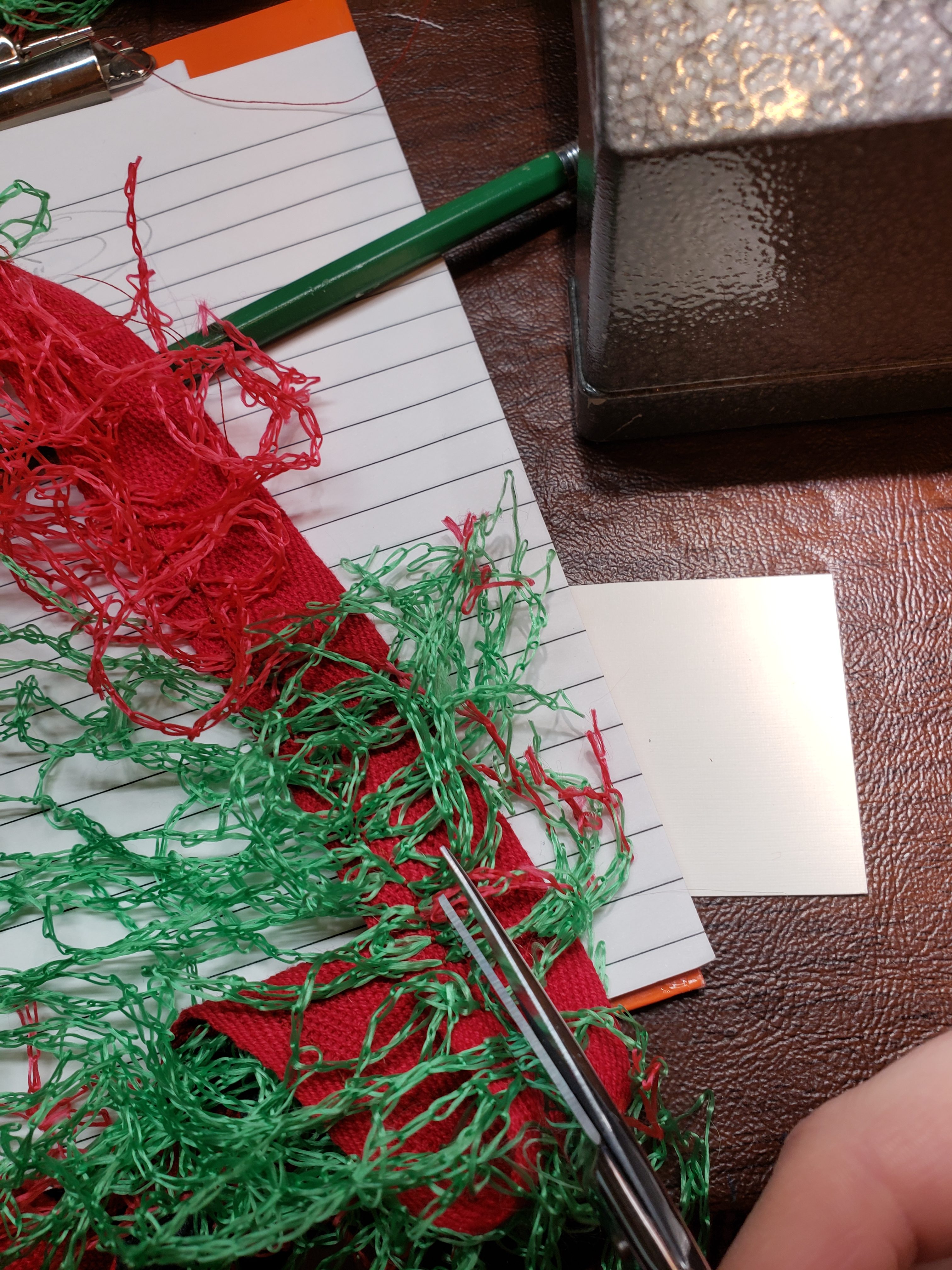
- After the hand stitching is complete, machine stitch on top of the hand stitching on a very narrow straight stitch setting.
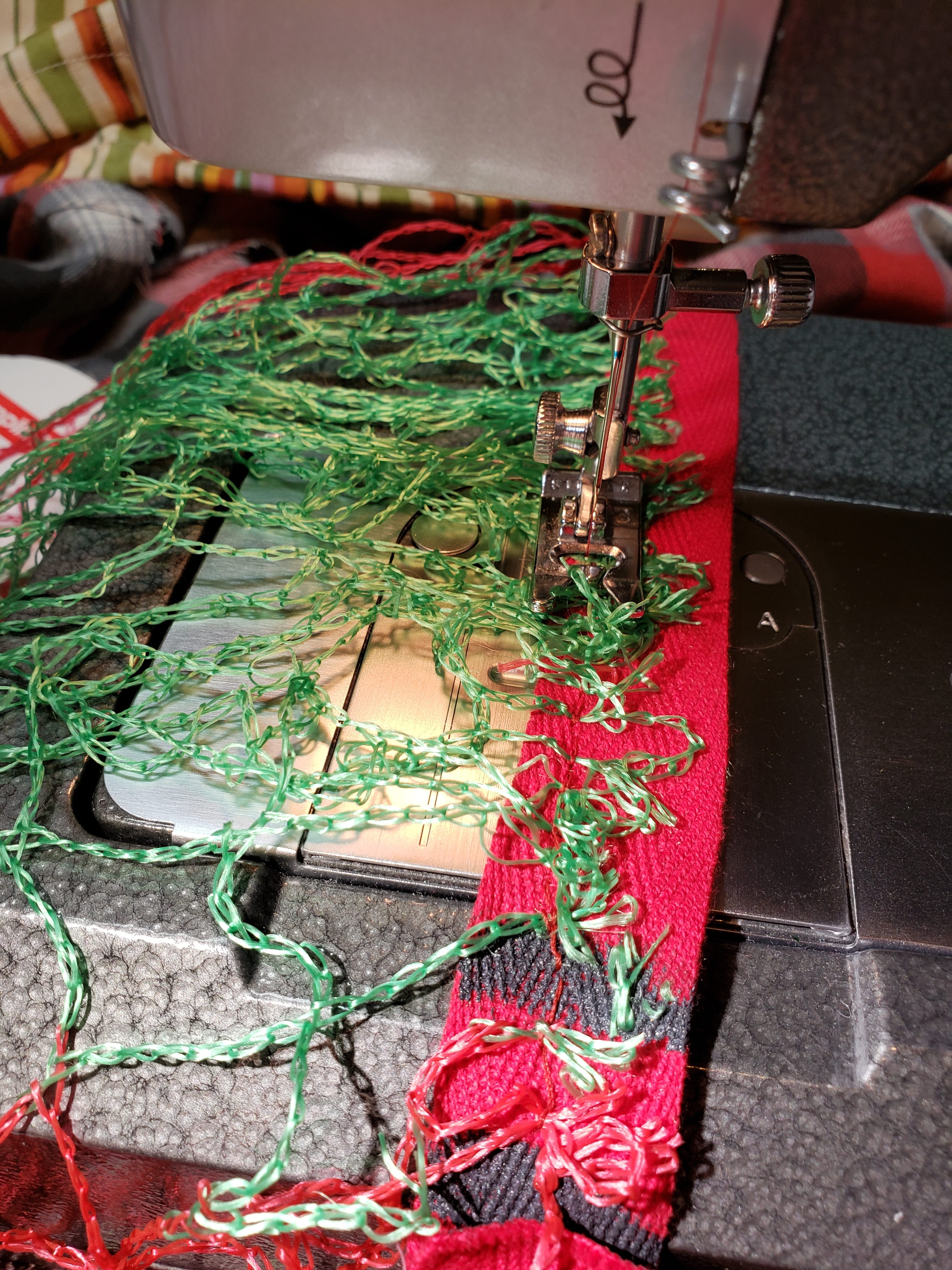
- Fold the trim in half, enclosing the raw edges of the netting.
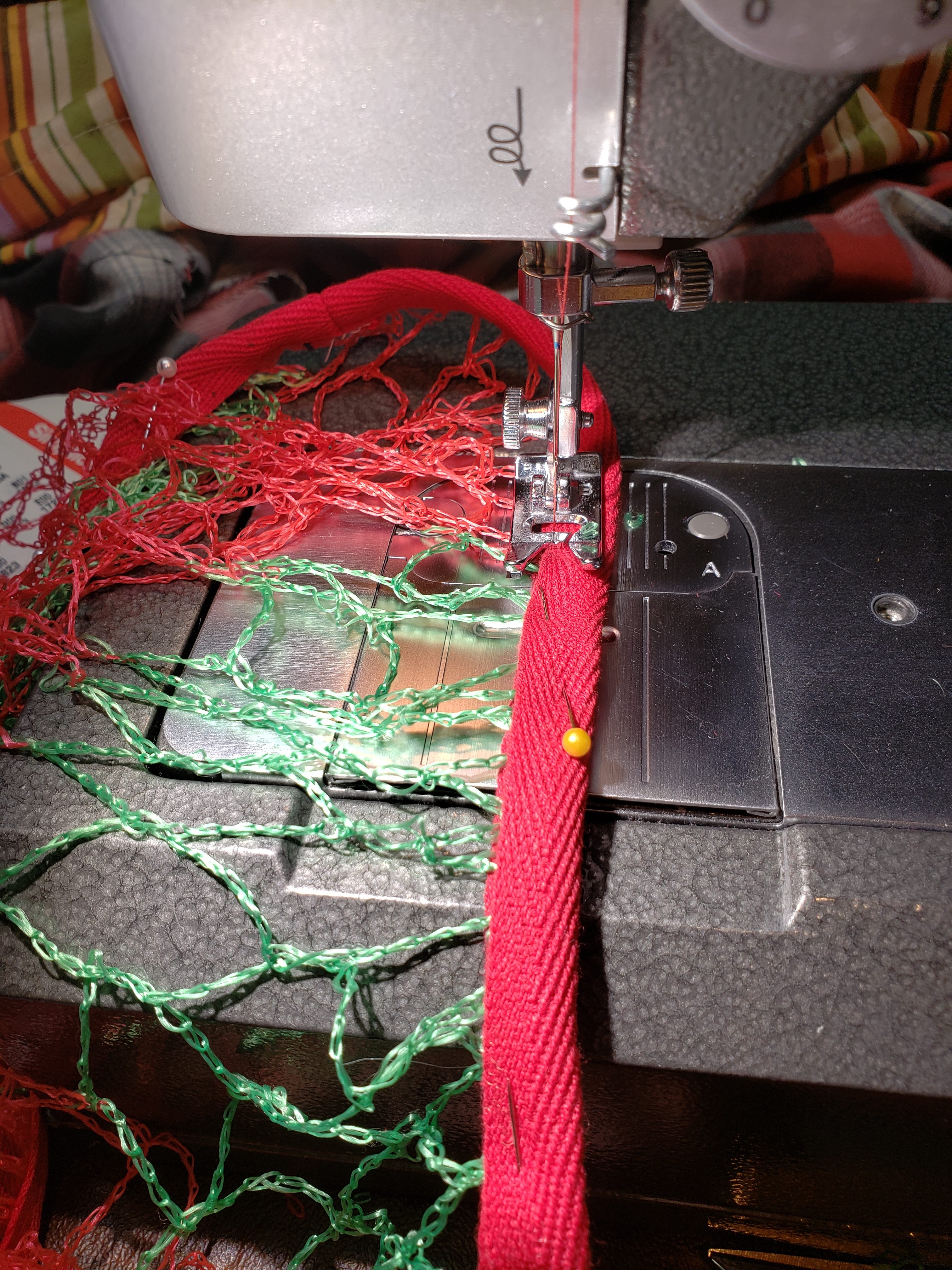
- Machine stitch very close to where the edges of the trim meet. Leave a 1″ gap opened somewhere along the perimeter.
- Using a yarn needle, thread the kitchen twine into the 1″ gap and through the perimeter of the bag. Knot loose ends of twine together.
